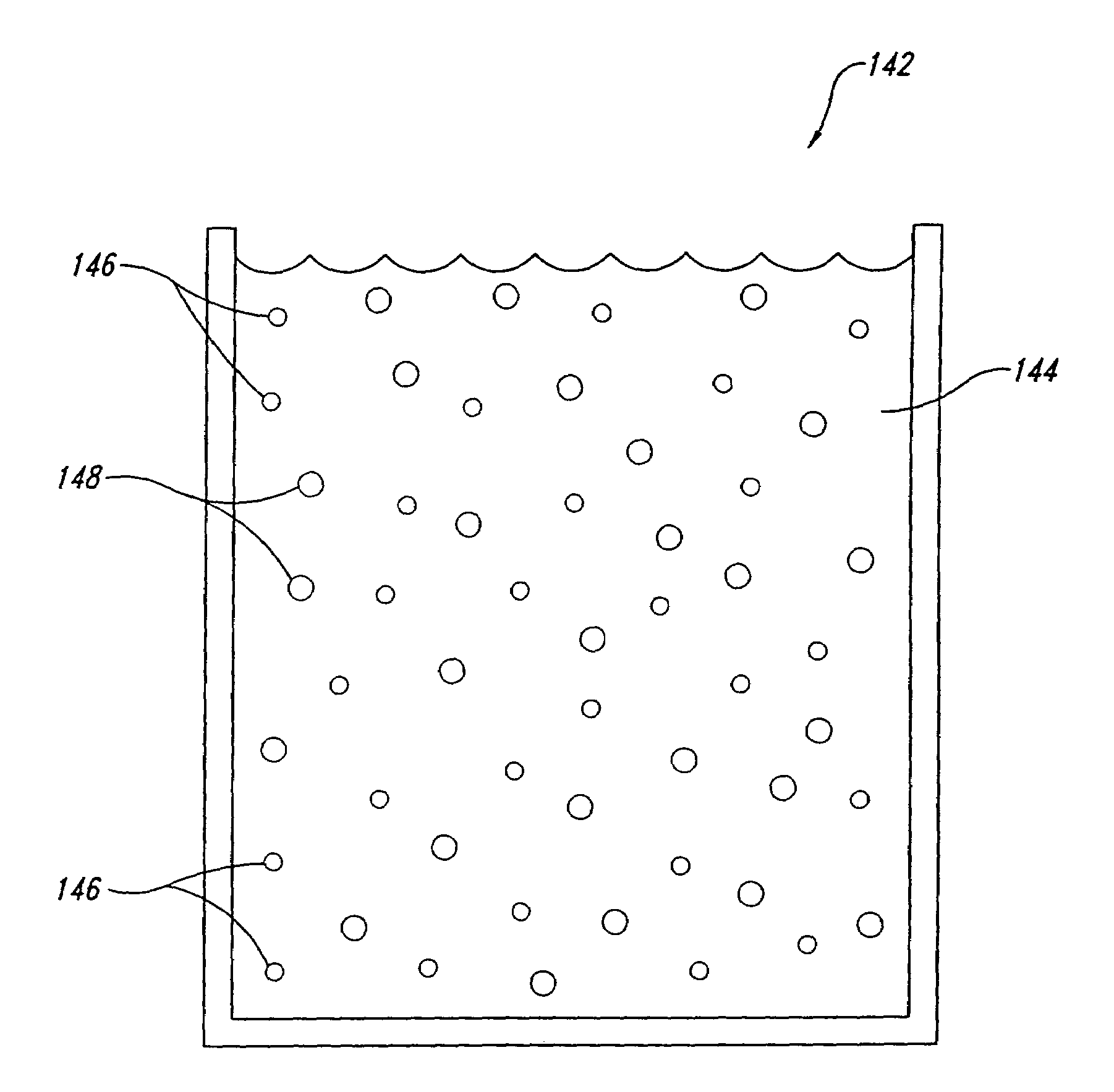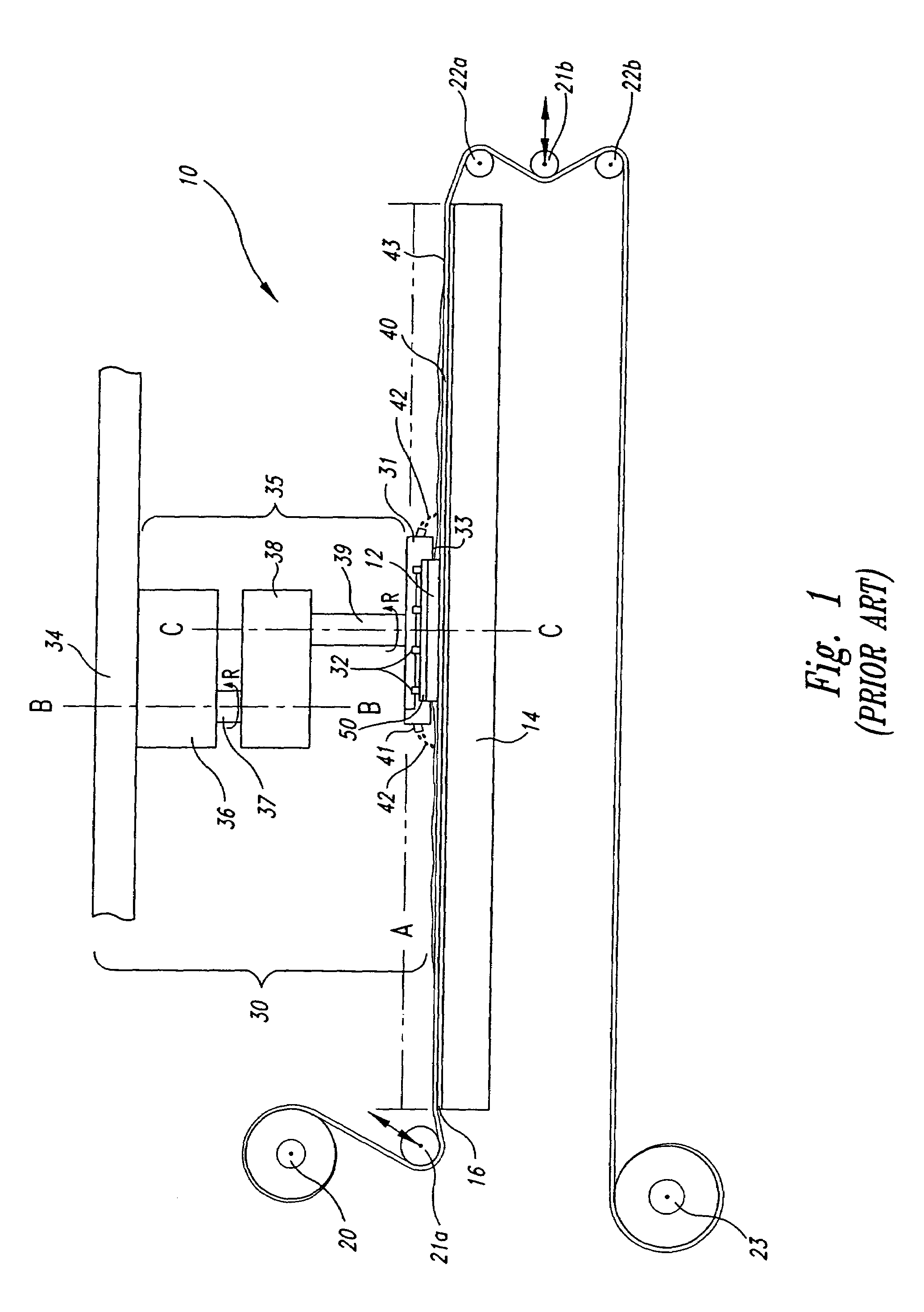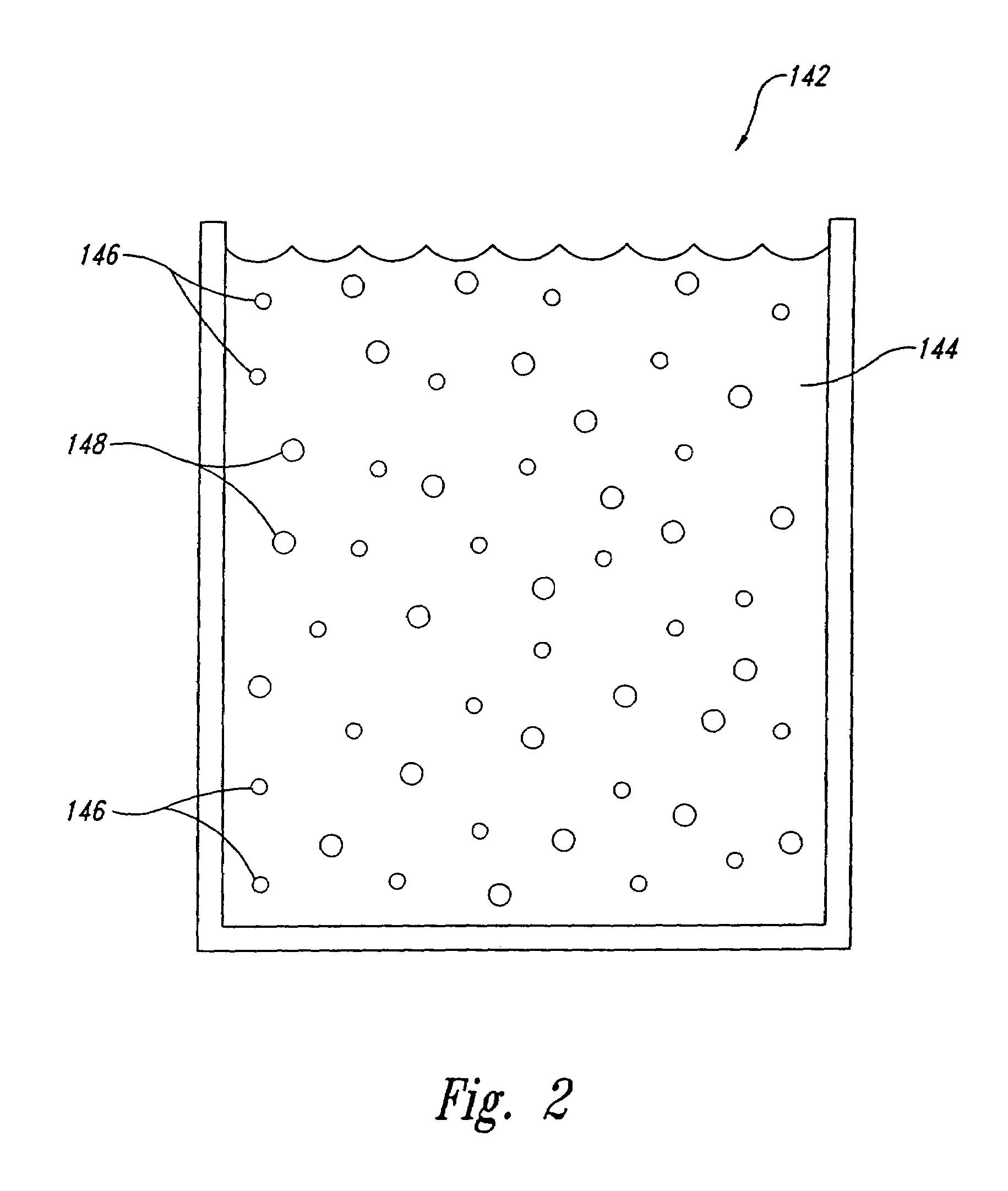Planarizing solutions, planarizing machines and methods for mechanical or chemical-mechanical planarization of microelectronic-device substrate assemblies
a technology of microelectronic devices and substrates, applied in the direction of grinding machines, manufacturing tools, lapping machines, etc., can solve the problems of many of these components not being electrically isolated from each other, components below the desired endpoint may be damaged or completely destroyed, and it is difficult to accurately focus the photo-patterns to within the tolerance of 0.1 m, etc., to achieve the effect of quick removal of materials
- Summary
- Abstract
- Description
- Claims
- Application Information
AI Technical Summary
Benefits of technology
Problems solved by technology
Method used
Image
Examples
Embodiment Construction
[0027]The present invention is directed toward planarizing solutions, planarizing machines and methods for planarizing microelectronic-device substrate assemblies using mechanical and / or chemical-mechanical planarization processes. Many specific details of certain embodiments of the invention are set forth in FIGS. 2-9 and the following description to provide a thorough understanding of such embodiments. One skilled in the art, however, will understand that the present invention may have additional embodiments, or that certain embodiments of the invention may be practiced without several of the details described the following description.
[0028]FIG. 2 is a schematic view of a planarizing solution 142 in accordance with one embodiment of the invention for selectively removing material from a substrate assembly. In this embodiment, the planarizing solution 142 includes a liquid mixture 144, a plurality of first abrasive particles 146, and a plurality of second abrasive particles 148. T...
PUM
| Property | Measurement | Unit |
|---|---|---|
| particle size distribution | aaaaa | aaaaa |
| particle size distribution | aaaaa | aaaaa |
| particle size distribution | aaaaa | aaaaa |
Abstract
Description
Claims
Application Information
 Login to View More
Login to View More - R&D
- Intellectual Property
- Life Sciences
- Materials
- Tech Scout
- Unparalleled Data Quality
- Higher Quality Content
- 60% Fewer Hallucinations
Browse by: Latest US Patents, China's latest patents, Technical Efficacy Thesaurus, Application Domain, Technology Topic, Popular Technical Reports.
© 2025 PatSnap. All rights reserved.Legal|Privacy policy|Modern Slavery Act Transparency Statement|Sitemap|About US| Contact US: help@patsnap.com



